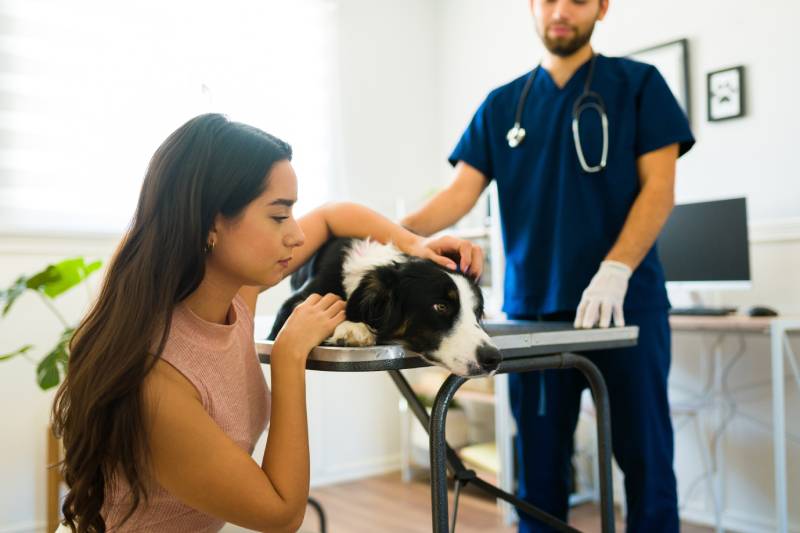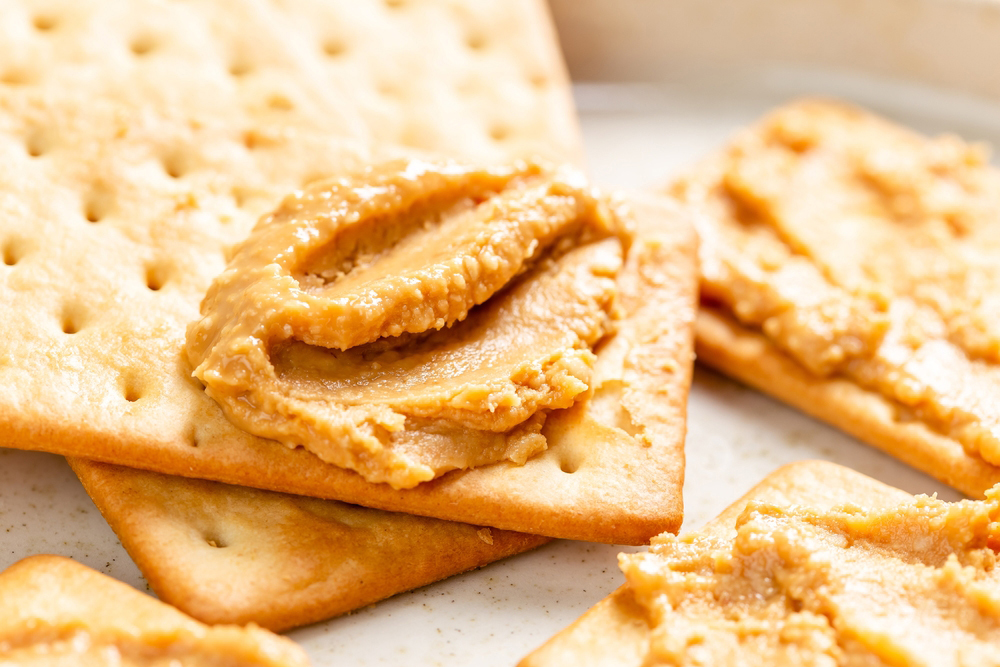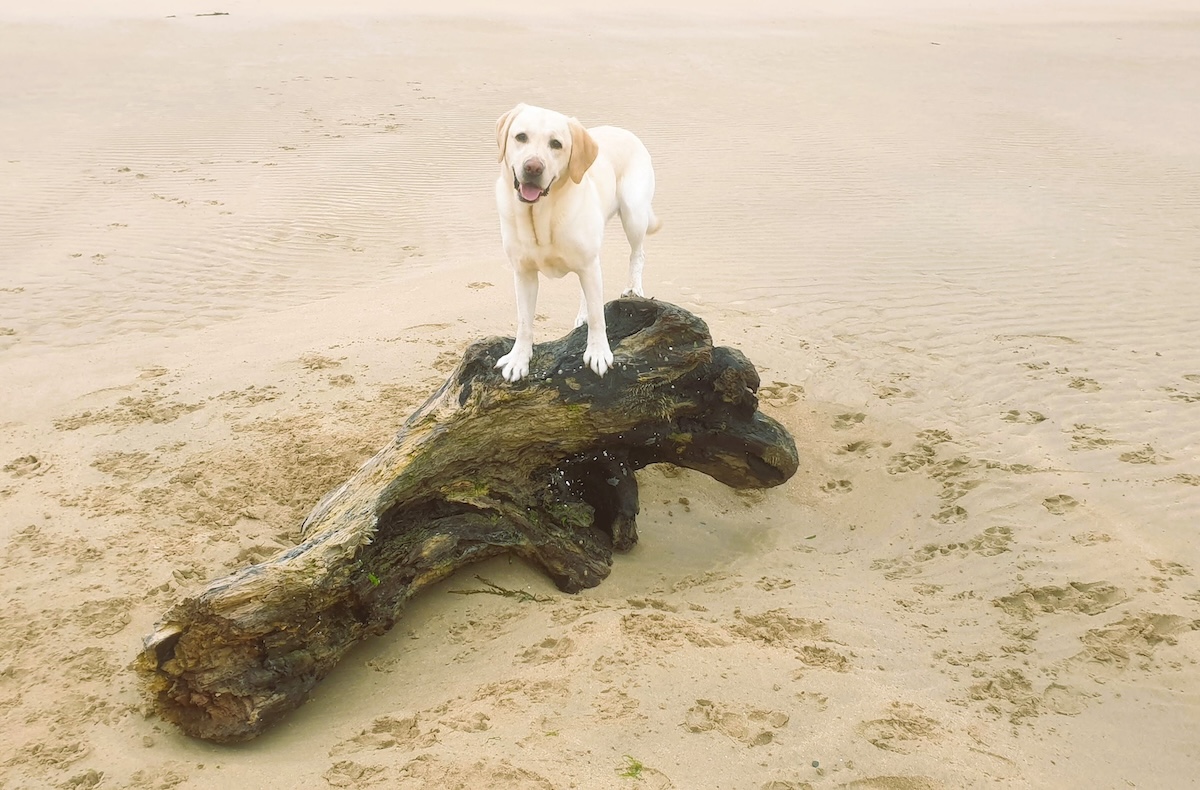Click to Skip Ahead
Brownies have long been an American favorite for those who love sweets. They are gooey, sweet, and filled with chocolaty heaven. For dog owners, we’re sure there has been a time when your dog stared at you longingly because they wanted a bite of your delicious treat, but can you give them a taste? Is it safe?
Unfortunately, no matter how much your dog makes you feel guilty for not sharing, dogs cannot eat brownies due to the ingredients used to make them, especially chocolate. Let’s dive deeper to give you a better understanding of the importance of refraining from giving brownies to your dog.
Why Can’t I Give My Dog a Brownie?
Brownies are just too risky to give your dog due to the ingredients often used to make them. Cocoa and chocolate should be avoided at all costs due to their toxicity to dogs. Chocolate contains two harmful chemicals to dogs—caffeine and theobromine, both of which are equally as harmful to dogs. Dogs cannot metabolize caffeine and theobromine like humans, which is why it’s toxic to their systems.
How Much Chocolate Is Toxic to Dogs?
Chocolate poisoning is rarely fatal in dogs, but it can still cause severe illness and should be avoided entirely. A rule of thumb is the darker the chocolate, the more dangerous due to the higher amounts of theobromine. Theobromine amounts in dark chocolate average roughly 130–450 mg per ounce, which is a considerably concentrated amount.
White chocolate poses the least threat of chocolate poisoning due to its ¼ mg content per ounce. However, even though it’s less toxic, you still should refrain from feeding it to your dog. Any chocolate has sugar and fat, and over time, your dog could develop other medical issues.
Many dogs will not have an issue with ingesting small amounts of chocolate, but dogs with certain medical issues, such as gastrointestinal problems, can develop vomiting and diarrhea. To put it into perspective, a 50-pound dog would only need to eat 1 ounce of baker’s chocolate to develop chocolate poisoning.

What Are the Signs of Chocolate Poisoning?
It’s wise to know the signs of potential chocolate poisoning in your dog so you know when to seek treatment. For most dogs, the signs include vomiting, diarrhea, panting, restlessness, excessive thirst and urination, and a racing heart rate. In serious intoxications, you can also see seizures, tremors, and even heart failure.
What Do I Do If My Dog Eats Chocolate?
As a dog owner, it’s crucial that you have important phone numbers on hand in case of an emergency. If you suspect your dog has eaten chocolate, contact the Pet Poison Helpline to address the issue immediately. You can also contact your vet to have all angles covered regarding what to do.
It’s vital to keep harmful foods out of reach from your dog to avoid a potential scare, but we know accidents happen, and when they do, it’s best to be prepared on what to do for the safety of your dog.
First, try to determine how much chocolate your dog ate and what kind. Even if you cannot determine that information, though, it’s best to contact a helpline or a vet for advice—the sooner the treatment, the better the outcome. If you know your dog ingested a small amount (and you don’t have a small-sized dog), observe for signs of chocolate poisoning. However, even if a small amount was ingested, you should at least call the Pet Poison Helpline or your veterinarian for advice.
Treatment usually consists of induced vomiting and administering activated charcoal to prevent the absorption of theobromine. Intravenous fluid therapy might also be administered. Depending on your dog’s signs and level of intoxication, antiemetic or medication to regulate the heart rhythm could be needed for their treatment.

Can I Make Dog-Friendly Brownies?
Although dogs do not need brownies in their diet, you can make ones that are dog-friendly. The secret is using an ingredient called carob, a healthy chocolate substitute. Carob is a Mediterranean bean that is ground into a fine powder or paste—in fact, carob is what doggie gourmet shops use to make their safe and tasty treats for pets. Carob is naturally sweet and does not contain caffeine or theobromine.
Let’s check out a dog-friendly brownie recipe:
- ½ cup vegetable oil
- 3 tbsp. honey
- 4 eggs
- 1 cup wheat flour
- 3 tbsp. carob powder
- 1 tsp. baking powder
Directions:
- Heat oven to 356 degrees Fahrenheit.
- In a large bowl, whisk together eggs, honey, and oil. Next, add flour, carob powder, and baking powder until combined thoroughly.
- Pour batter into pan.
- Bake for 30–35 minutes (stick a toothpick inside; if it comes out clean, it’s done).
- Let cool to a safe temperature and cut into small squares.
- Share a piece with your dog and have one for yourself!
Tips for a Healthy Diet for Your Dog
Your dog’s nutrition is the foundation behind a healthy doggie. When feeding commercial dog food, look for food that is complete and balanced, as well as adheres to AAFCO’s levels of nutrition. Avoid dog food with artificial preservatives and flavorings, and follow the guidelines on how much to feed according to your dog’s weight.
Now that you have a dog-friendly brownie recipe, you still need to ensure you don’t overfeed your dog the sweet treat (treats should generally account for no more than 10% of your dog’s daily diet).
Final Thoughts
Brownies are not safe for your dog to consume. Never leave cocoa or chocolate out within reach of your dog—chances are that they will devour the chocolate in no time, which can result in severe illness. We know it’s hard to resist when your dog looks at you with a pleading look, but it’s best to avoid feeding them even a small amount of brownie due to the risks. If you want your dog to have a tasty brownie treat, try the dog-friendly recipe—your doggie will love you for it!
- Related Read: Can Dogs Eat Mexican Rice? Vet-Reviewed Facts
Featured Image Credit: iMattSmart, Unsplash











